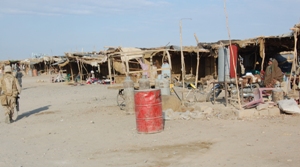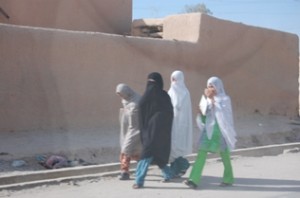“The Zargari Incident” Photo Gallery
Return to The Zargari Incident main page
Although The Zargari Incident is a work of fiction, Kristin’s novel is grounded in her reporting in Afghanistan for The Washington Post Magazine. (Photos by Kristin Henderson except as noted)

From the outside, the provincial reconstruction team compound where Sonny lives would look a lot like this forward operating base in southwestern Afghanistan — in other words, a lot like a prison.

…you get a bird’s eye view of the narrow strips of fertile land along the rivers and streams where people live, surrounded by desert.

From above, a glimpse of daily life inside the walls of family compounds — laundry lines and kitchen gardens, just like anywhere else.

High walls and gates protect those family compounds — speaking of which, that’s the kind of fancy gate Haji Angar would have.

While searching for Clara, Sonny gets out to the forward operating bases (FOBs) by riding with Marines in the back of a 7-ton truck. They sit in two rows in the middle, back-to-back and facing out, so they’re in position to fire outward in case of attack.
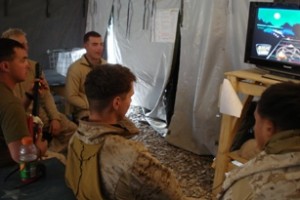
Like Sonny, I came across a group of Marines playing “Guitar Hero”, the video game — the guy on the left is taking his turn with the guitar. “They fight like lions” as one Marine officer told me, and at the same time, many of them are still kids. By the way, on the mess tent floor, you can see the layer of rocks they put down to minimize the dust.

Sonny’s meeting in Zargari would have looked like this one between western representatives and a district governor — he’s in the middle, the sharp-dressed guy in the turban.
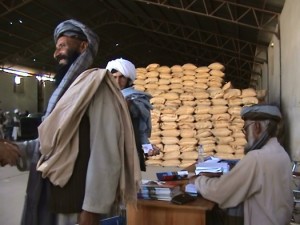
As in the novel, in real life those bags of wheat seed are hard to track. Both corruption and illiteracy produce paperwork that doesn’t add up. (Photo courtesy of USAID)

Humvees on a FOB, lined up and ready for a mission. From the outside they look like they ought to be roomy…

…but as Sonny discovered, inside it’s a tight fit. This is the view from a Humvee’s backseat, behind the driver and next to the legs of the turret gunner who’s sitting in a sling — the other backseat passenger is on the other side of the gunner’s legs.

This could have been the patrol that takes Sonny into Zargari in search of information about Clara’s whereabouts.
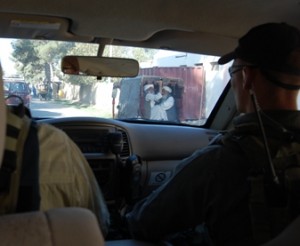
Back in the provincial capital, where it’s safer, Sonny gets around in just an armored SUV with a small team of civilian security contractors like these guys. By the way, if you look closely through the windshield, you can see two men squeezed into the back of motorbike taxi.

But in this town, like the book’s mythical town of Zargari, no one waves. See the burned-out cars in the background? Bombings and violence have left people afraid and angry.
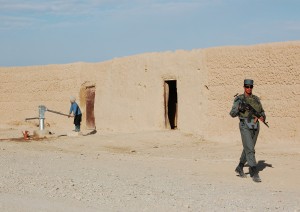
In an attempt to win over the residents of this town, the Marines have paid to install water pumps while giving the local police the credit.

Zargari’s police station would look like this small-town police station with a green police truck out front and a guard under the awning on the left.
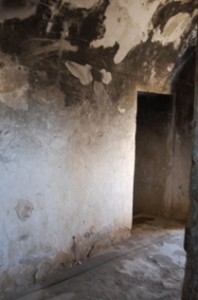
Inside a police station. Money for improvements, supplies, and even salaries either never leaves Kabul or gets siphoned off before it gets to where it’s needed.

Like Sonny, who mentors local Afghan officials in an effort to improve governance, a USAID officer and his Afghan assistant meet here with the caretaker of a USAID-funded park. That’s one of the USAID security contractors in the background.

Typical scenes in the bazaars in Afghan villages and towns that Sonny would have driven by: A row of shops in a small city…

When Sonny tries to talk to Haji Angar in the alley near the mosque, the participants would have been positioned something like this — while a couple of Marines are engaging with elders on the left, the Marines on the right are looking the other way, watching for trouble.
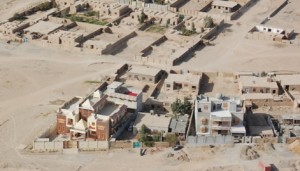
One of these Afghan McMansions under construction could serve quite nicely as Commandan Qajeer’s narco palace.

A squatters’ shanty town, full of people with nothing much and nowhere to go — the kind of place that someone like the commandan wouldn’t think twice about bulldozing to make way for an airport expansion.

This is the kind of meal that would have been served at the meeting of tribal elders where Sonny gets closer to figuring out who was behind Clara’s disappearance.

That’s me interviewing then-1stLt Arthur Karell in Now Zad in Afghanistan’s Helmand province.
Read the story of his platoon.












